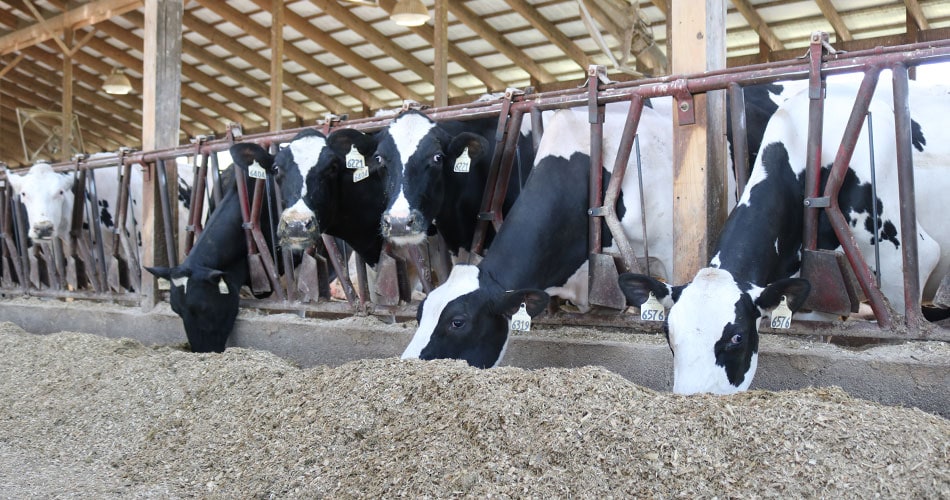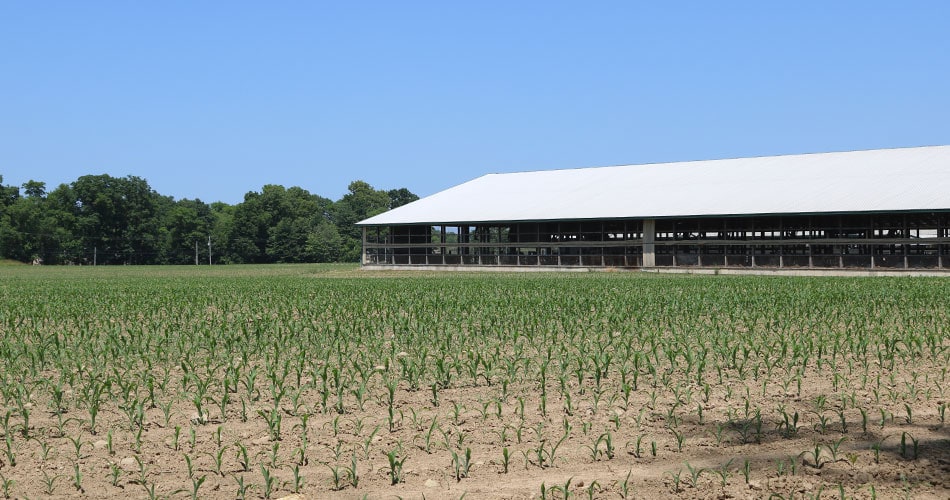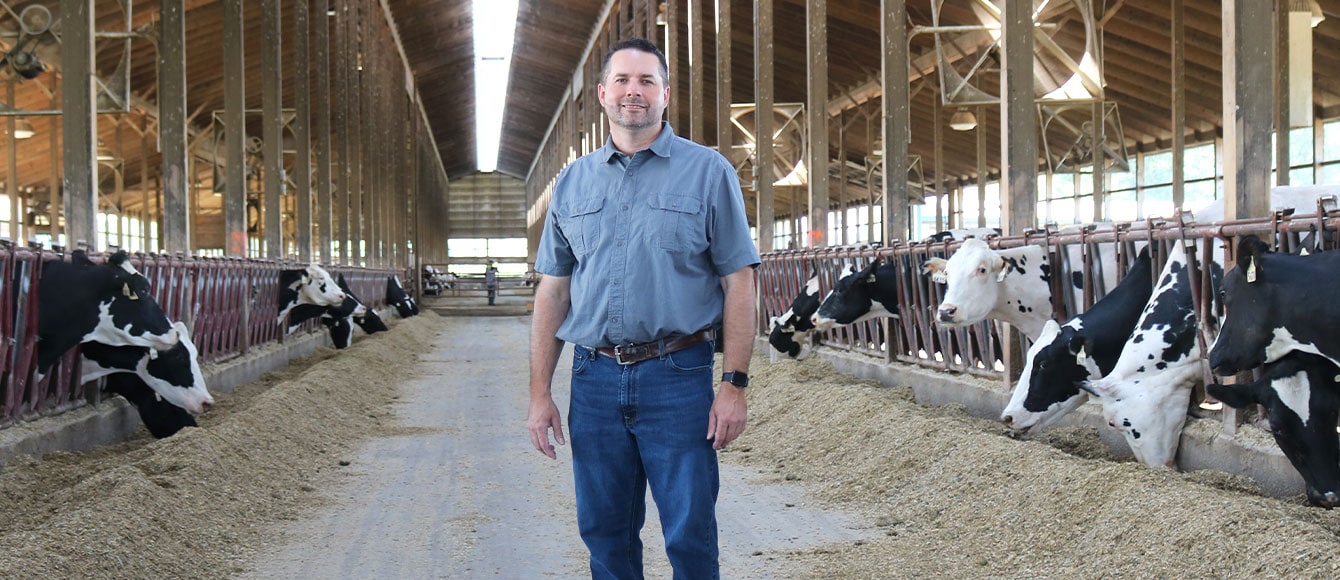Frank Burkett
Dairy farmer from Canal Fulton, Ohio
Frank is a fifth-generation dairy farmer. He works alongside his three uncles and several cousins at Clardale Farms, which is named for their grandparents, Dale and Clara Rohr. Together with a team of dedicated employees, they for 695 dairy cows and farm about 1,900 acres of wheat, soybeans, corn and alfalfa hay.
How have you seen dairy farming evolve in your lifetime?
Frank: What hasn’t changed? Something that hasn’t changed is our team’s commitment to cow care and environmental stewardship – that commitment is just as strong as ever. We want to make sure that we do the right things every time, and it takes a lot of work. What has changed tremendously in the last 5 to 10 years is the technologies and the way that we go about it.
The technologies we use to monitor cow behavior and their development are exponential, and the things that we know about cows from rumination to mobility are incredible. Every cow here wears what we call an AfiCollar, which is the cow equivalent to an Apple Watch. It collects data that we can assemble and use to make management decisions for our cows. That’s a powerful tool.
Something else that’s changed is our tillage practices for crop production. We do a lot of what we call minimum-till or no-till farming compared to what we did 20 or 30 years ago. We do that because it minimizes potential erosion and soil loss. It also helps us keep as much moisture in the ground as as possible, which gives freshly planted seeds a good start.
Where do your cows live?
Frank: Our cows live in a four row, naturally ventilated barn. Everything in this barn is designed for cow comfort, milk production and cow longevity. We want to make sure that the cows have everything they want and that all their needs are met. That includes water, comfortable temperatures, unlimited feed, and a very comfortable place to rest. It’s actually called a free stall barn because the cows are free to move back and form from the stalls to their feed and water, and to the milking parlor.

How do you know what to feed your cows?
Frank: We feed the cows a TMR, or total mixed ration. It’s multiple ingredients – some are grown on our farm and some are purchased – that are blended together. The TMR is formulated by a nutritionist who visits the farm. He comes once a week to look at the cows, their body condition, their milk components and their milk production, and makes adjustments to the diet based on that information. Fresh feed is laid down every morning and the cows have access to it all day.
We feed a lot of outside commodities and byproducts of manufacturing. Ingredients ranging from cereal fines to canola meal to soybean pellets or soybean hulls. We’re currently using brewer’s grain, which is a byproduct of making beer. The availability of these types of ingredients changes throughout the year, so that’s why it’s important for our nutritionist to visit on a regular basis to adapt the diet accordingly. I could get a call tomorrow about availability of soybean hulls, and if they’re a good price and work with our program, I’ll buy them and call our nutritionist to make them fit into our ration.
How do you store the manure on your farm and where does it go?
Frank: We care about the environment, we care about our neighbors, and we want to make sure that we’re doing the right thing all the time. That’s why it’s important to apply manure and nutrients at the right place and right time, and the right way every time.
Part of that responsible application process means having enough manure storage. Because of our storage capacity, we’re able to apply nutrients at times when the crops need it and we do not have to apply it on snow covered or frozen ground – that’s critically important. Our manure storage pit holds 5 million gallons. It has a synthetic liner with a clay liner underneath it, just like you would see in a commercial landfill or any type of application that requires 100% containment. I literally have a three-ring binder that’s about six inches thick with the weld results from every single weld in the test on that liner. Every drop of manure that comes off this farm ends up in the pit. Every load of manure that goes out of here is applied to our crop fields as natural fertilizer.
How do you care for your land?
Frank: Soil is a living, breathing organism and we don’t often think of it that way. We think about the plants – but there’s a lot more going on underneath the ground, and part of that starts with a good soil testing program. We do a lot of grid sampling on our crop fields here, which is more precise than the standard aggregate samples we used, say, 20 years ago. Now we can use GPS technology to split fields into all kinds of different squares or grids for testing. Then we use variable rate technology to apply manure or commercial fertilizer, or even micronutrients to those precise locations so the soil gets exactly what it needs.

Learn more about how Frank cares for his cows and calves or meet more Ohio and West Virginia dairy farmers.

